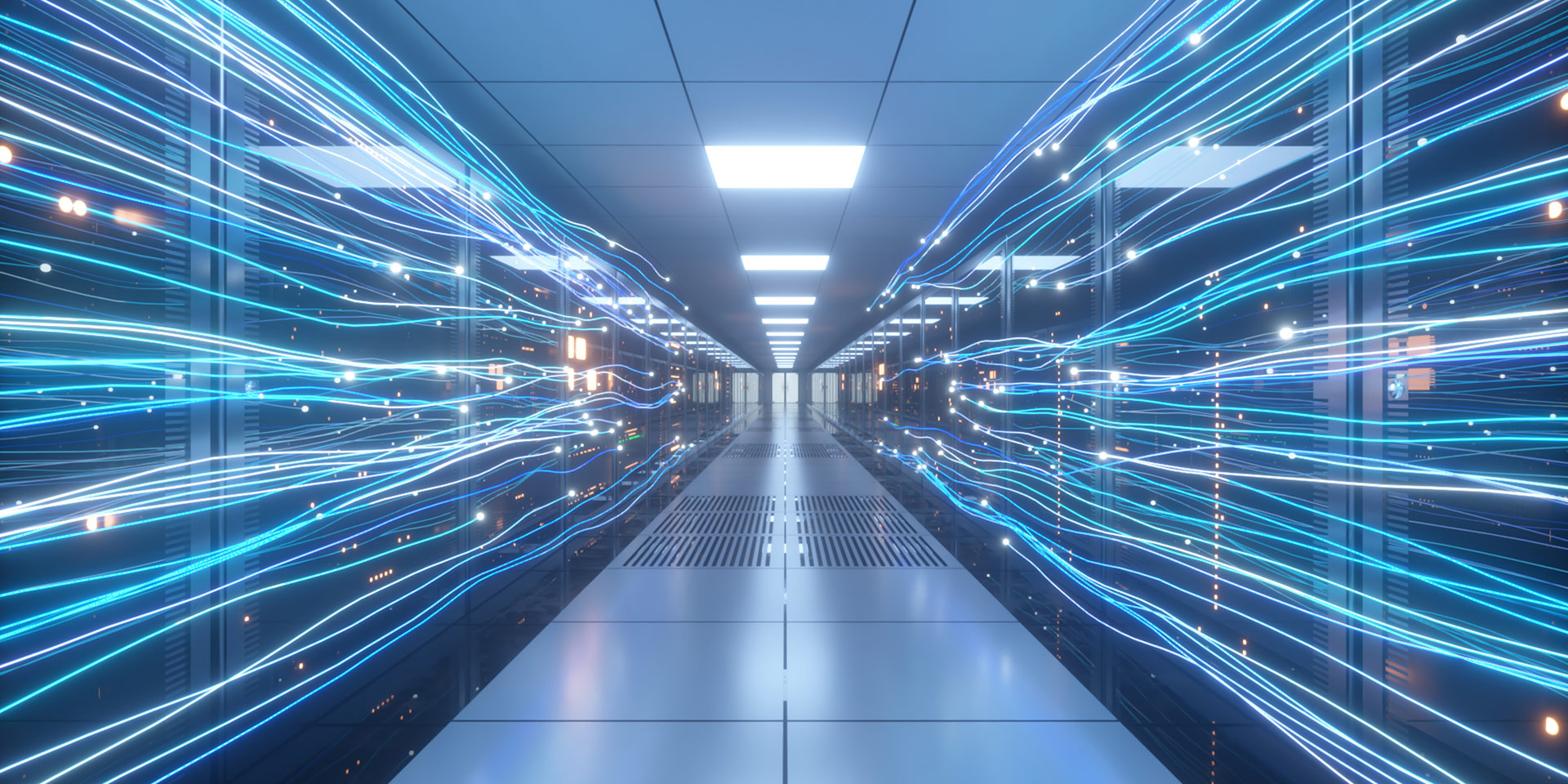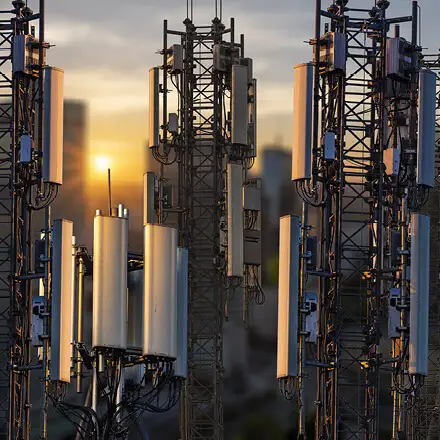Published on 20 January 2022
Digitalization as an environmental killer?
The digitalization is proceeding in big steps. Things that were dreams of the future yesterday are already possible today. 5G, above all, enables innovative applications, as data can be transferred ten times faster with 5G than with 4G. Video streaming in Ultra HD, AI applications at home, in companies or in the industry, autonomous driving and much more is only possible through 5G. In addition, smart systems should save energy and promote sustainability. But is that really true?
Experts assume the opposite: due to more and more opportunities and better terminal devices, energy consumption will increase through 5G – and namely many times over. By using wisely AI technologies like smart home systems energy is used more efficiently, but the numerous new opportunities and improved technologies are proper energy guzzlers. Moreover, new or better applications will also be used more. After all, 5G is focused on creating more opportunities via the smartphone and simplifying things.

Streaming of videos, for example, belongs to this. 5G promises data transmission in real time – even of big data amounts. So far it was really annoying when videos took ages to load or were interrupted again and again.
With the help of 5G video streaming should be possible everywhere without the vexatious problem of reloading. The image quality as well can be improved by this because streaming on the smartphone is now possible even in Ultra HD or 4K respectively. That’s why the providers of 5G and smartphone producers assume that a lot more users will watch videos on their smartphones.
Sounds good, but there is a catch: Streaming in Ultra HD requires ten times more energy than in the previously used HD quality. For the environment this means: streaming in Ultra HD emits four times more carbon dioxide than streaming in normal HD quality.
There is also talk of autonomous driving time and time again. Driverless cars are particularly subtle AI systems. AI, however, consumes an enormous amount of energy. Only one driverless car produces about 4000 GB data in one day – the energy consumption is accordingly high. Smart home systems as well, which are supposed to reduce the power consumption at home on the one hand, require enormous amounts of energy on the other hand by the constant transfer of data.

Through video streaming in Ultra HD and generally more streaming as well as through new AI applications and more and more smart home systems finally more computer centres are required. Experts estimate that the energy consumption in computer centres will increase by more than 60 per cent in the next ten years - that’s the output of about 600 big wind power stations, which would be required additionally if you want to opt for clean energy generation. Covering such amounts of additional energy by coal-fired power plants would raise the carbon dioxide emission many times over and ruin all efforts for the climate protection. But at the pace the digitalization is developing, it is questionable whether enough renewable energies will be available for that.
Thus, the energy efficiency promised by 5G is a farce. The bottom line is that by using more digital technology the energy saving through 5G will be nullified – and the carbon dioxide emission will increase.

The digitalization offers us a lot of opportunities. Everybody, however, should think about how much of it we really need. Why stream a film on the tablet computer when it’s running on TV at that moment? Why operate the coffee machine via app instead of doing it by hand. Each mobile application increases the energy consumption and thus the carbon dioxide emission – that’s what you should be aware of.
In addition, every digital device emits a certain radiation which strains us and might be harmful to our health in the long term. For this very reason the digital transformation should be combined with a greater awareness and mindfulness for our own health as well. As digital as necessary, as safe as possible – that’s the central idea of memon.
More about the memon technology
Attribution:
Kroll, Matthias (2020): Die Auswirkungen des 5G Netz-Ausbaus auf Energieverbrauch, Klimaschutz und die Einführung weiterer Überwachungstechniken.
Kroll, Matthias (2021): Wie kann das verbliebene CO2-Budget gerecht auf die Weltbevölkerung aufgeteilt werden?
Experts assume the opposite: due to more and more opportunities and better terminal devices, energy consumption will increase through 5G – and namely many times over. By using wisely AI technologies like smart home systems energy is used more efficiently, but the numerous new opportunities and improved technologies are proper energy guzzlers. Moreover, new or better applications will also be used more. After all, 5G is focused on creating more opportunities via the smartphone and simplifying things.
Energy guzzler: streaming in HD

Streaming of videos, for example, belongs to this. 5G promises data transmission in real time – even of big data amounts. So far it was really annoying when videos took ages to load or were interrupted again and again.
With the help of 5G video streaming should be possible everywhere without the vexatious problem of reloading. The image quality as well can be improved by this because streaming on the smartphone is now possible even in Ultra HD or 4K respectively. That’s why the providers of 5G and smartphone producers assume that a lot more users will watch videos on their smartphones.
Sounds good, but there is a catch: Streaming in Ultra HD requires ten times more energy than in the previously used HD quality. For the environment this means: streaming in Ultra HD emits four times more carbon dioxide than streaming in normal HD quality.
AI and autonomous driving
Artificial intelligence (AI) plays a major role in many areas already today, not only in the industry. Digital gadgets like Alexa and complete smart home systems belong to our everyday life long since. By the means of 5G artificial intelligence will become more and more clever and a self-evident part of our life. This is understandable as such systems are aimed at simplifying our life and offering us a completely new way of comfort.There is also talk of autonomous driving time and time again. Driverless cars are particularly subtle AI systems. AI, however, consumes an enormous amount of energy. Only one driverless car produces about 4000 GB data in one day – the energy consumption is accordingly high. Smart home systems as well, which are supposed to reduce the power consumption at home on the one hand, require enormous amounts of energy on the other hand by the constant transfer of data.
Energy consumption in computer centres is increasing by 60 per cent

Through video streaming in Ultra HD and generally more streaming as well as through new AI applications and more and more smart home systems finally more computer centres are required. Experts estimate that the energy consumption in computer centres will increase by more than 60 per cent in the next ten years - that’s the output of about 600 big wind power stations, which would be required additionally if you want to opt for clean energy generation. Covering such amounts of additional energy by coal-fired power plants would raise the carbon dioxide emission many times over and ruin all efforts for the climate protection. But at the pace the digitalization is developing, it is questionable whether enough renewable energies will be available for that.
Thus, the energy efficiency promised by 5G is a farce. The bottom line is that by using more digital technology the energy saving through 5G will be nullified – and the carbon dioxide emission will increase.
More digital technology
In the end, the rapid digitalization in all areas of life lead to an increased use of digital technology and to a higher production volume of terminal devices like smartphones, tablet computers or laptops. Digital technology is by now no longer a question of age. Grandma and granddad use the smartphone in the same way the kids do. In Germany, 5G is almost comprehensively available throughout the country and will seal the shift from analogue to digital – in all generations. So it’s clear that energy guzzling applications like mobile video streaming or smart home will be used more and more often in the near future – and the digitalization will consequently require not less but more energy and the carbon dioxide emission will be increased accordingly.Handling digital technology consciously

The digitalization offers us a lot of opportunities. Everybody, however, should think about how much of it we really need. Why stream a film on the tablet computer when it’s running on TV at that moment? Why operate the coffee machine via app instead of doing it by hand. Each mobile application increases the energy consumption and thus the carbon dioxide emission – that’s what you should be aware of.
In addition, every digital device emits a certain radiation which strains us and might be harmful to our health in the long term. For this very reason the digital transformation should be combined with a greater awareness and mindfulness for our own health as well. As digital as necessary, as safe as possible – that’s the central idea of memon.
More about the memon technology
Attribution:
Kroll, Matthias (2020): Die Auswirkungen des 5G Netz-Ausbaus auf Energieverbrauch, Klimaschutz und die Einführung weiterer Überwachungstechniken.
Kroll, Matthias (2021): Wie kann das verbliebene CO2-Budget gerecht auf die Weltbevölkerung aufgeteilt werden?











